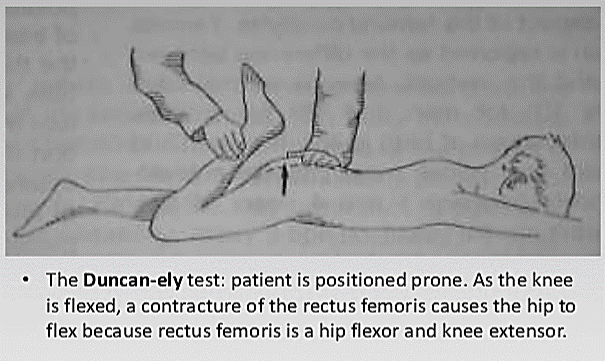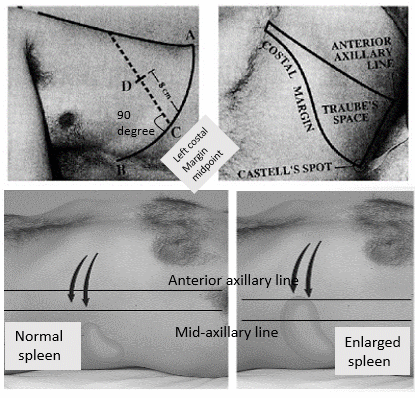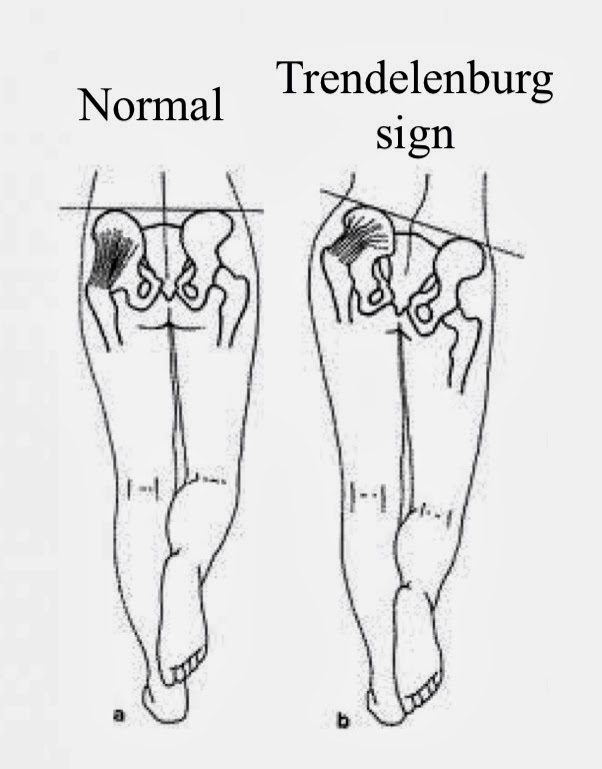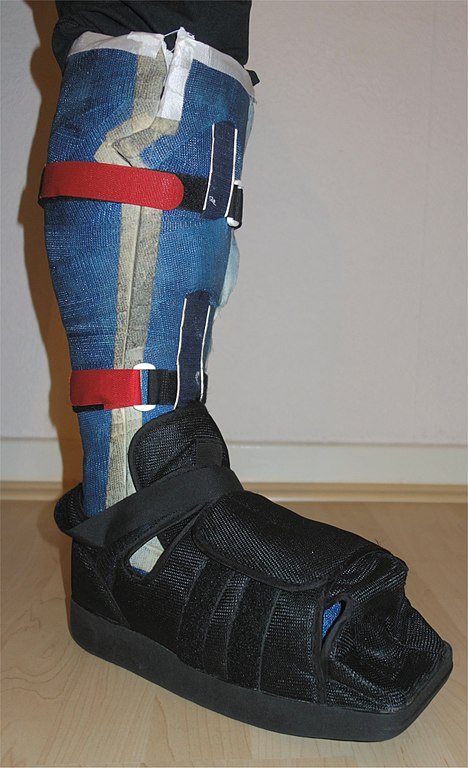Rectus femoris is the only Quadriceps muscle that cross the hip joint and act as a hip flexor and knee extensor. When the rectus femoris is shortened/tightened, it tends to pull the pelvis forward into anterior pelvic tilt and also forces the knee into hyperextension.
Ely’s test:
- Patient is positioned prone.
- With one hand of the examiner on the patient’s lower back, other hand holds the patient’s leg at heel and flexes the knee towards the buttocks making sure the leg doesn’t abduct
Positive test:
When the patient is unable to flex or touch the heels towards the buttocks and the hip of the affected side rises up from the table, the patient will also feel or complain of pain or tingling in the back or legs indicates a positive Ely’s test.



